The current Russian-Ukrainian war is a test for the new administrative-territorial system based on self-governing territorial communities. There used to be fears that they might become hotbeds of separatism. So far, we know of only a few cases, and they were all in the south and east of Ukraine and involved people we could expect it from. In the Chernihiv region, where the occupation lasted from late February to early April 2022, local self-governments together with their residents and the AFU became the wall against which the “fraternal invasion” crashed. Russians were frankly astonished not only by our roads and infrastructure, the delights of civilization in everyday life, but also by the weight of our self-governments. For example, ruscists enter a small town and ask a local man: where is your state administration? In response, they hear – here it is, that empty house on the square, it used to be there, now the town council attends to everything. A bombshell.
On the morning of February 24, thousands of convoys of Russian vehicles from Gomel (Belarus) and Bryansk (Russia) passed through the region. Community heads asked people not to expose themselves to danger and, if possible, avoid meeting the occupiers. Later, the residents of Sosnytsia saw how dangerous it was – a local woman was killed during ruscists’ chaotic shooting.
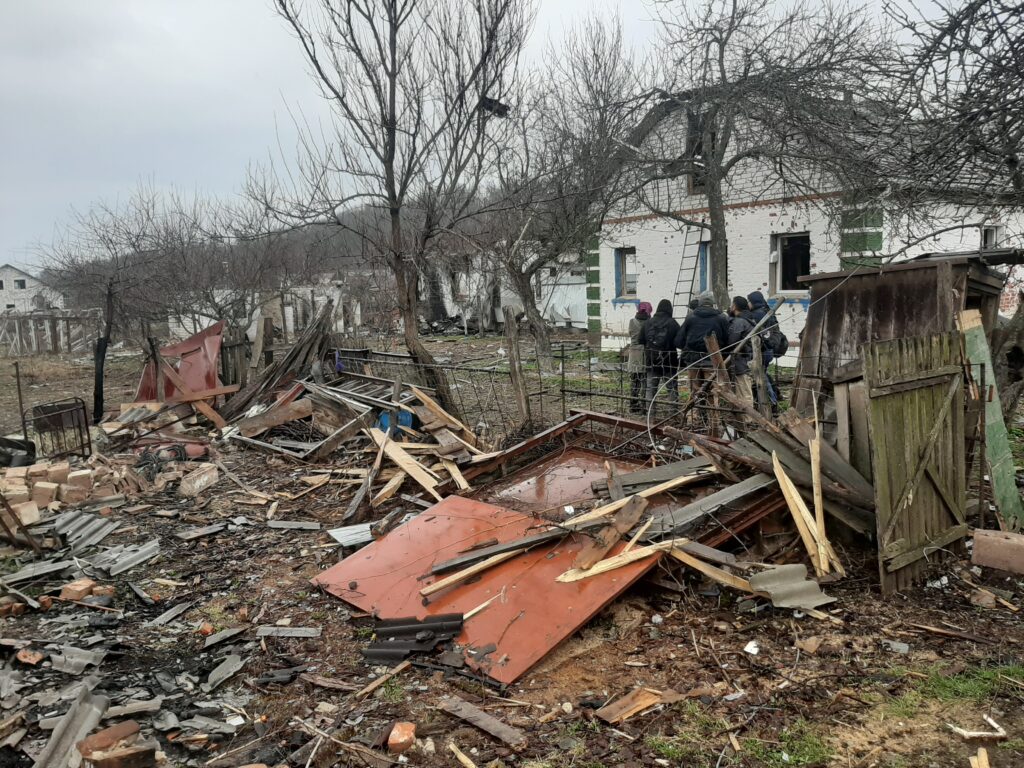
The day before, on February 23, Ukraine began the first wave of mobilization, the main burden of which was to be borne by local councils together with military commissariats. But ruscists moved too quickly, so that decision could be implemented only in some communities.
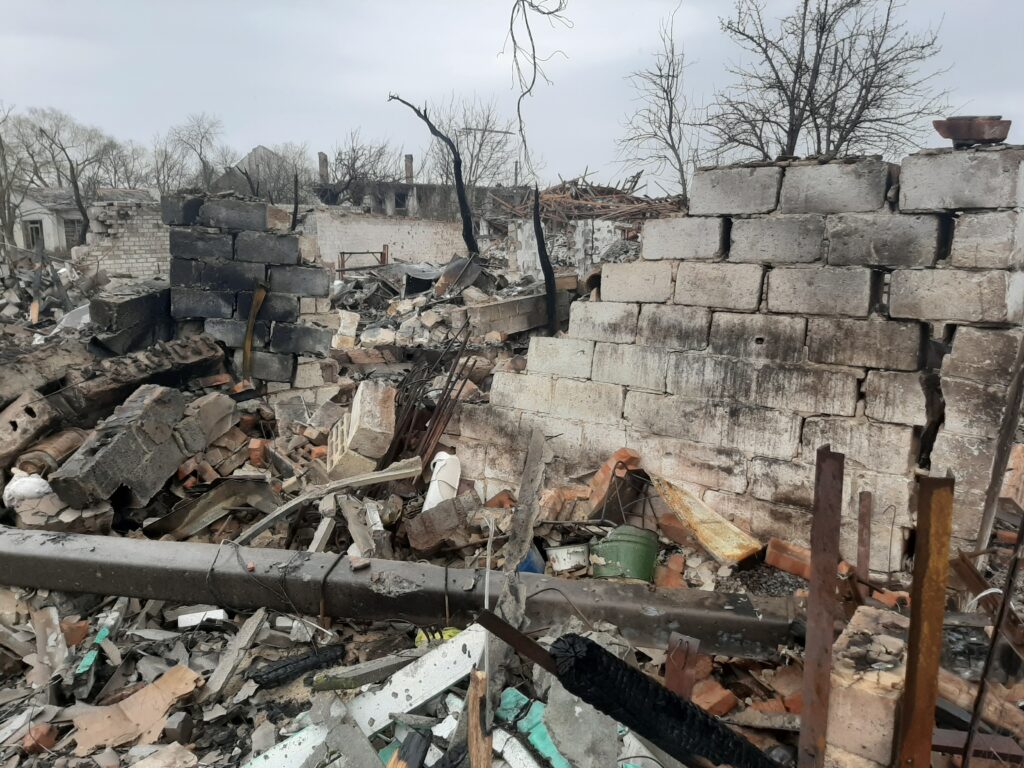
The same with Territorial Defense – there was a legal base, but the corresponding AFU battalions were just being formed. The issues of premises and, partially, material support were “closed” via local self-governing bodies (not their function). The aforementioned delay did not allow to deploy Territorial Defense in the north of the region, only in the center and in the south – primarily, on the basis of the largest cities of the region and around them – Chernihiv, Nizhyn, Pryluky, Bakhmach. Everyone who wished could join, no matter what was their training. Mayors called to create detachments (although under the legislation it is a component of the AFU) and stand up to defend not only Ukraine, but also their city, their family, their environment, human dignity, their businesses and property. It was not only about patrols or roadblocks, but also fighting in battles. A telling episode took place near Nizhyn – the Territorial Defense of the Kruty community led by the village head, made a huge blockage on the track. This paralyzed traffic on that section for a long time, allowed the AFU units to pull up and win the second battle at Kruty.
Elected officials also headed the Territorial Defense in Olyshivka, Makiivka, Mryn, Novyi Bilous, Kyselivka… Those units were maintained primarily at the expense of local resources. In crisis situations, people tend to trust those they elected. And the latter can’t help performing their duties, otherwise they are not leaders. Thus, with the help of local self-government as an institution, local patriotism combined with national patriotism, greatly enhancing the capabilities of the AFU to defend the region.
The communities that were in the hordes’ rear under passive occupation organized self-defense units. Local residents initiated their creation and appealed to the elected authorities. The latter led the movement and legitimized it. This made it possible to keep the social situation within a more or less normal framework: there was a curfew and settlements were patrolled. The situation was worse where such detachments could not be formed (it is about communities that found themselves on Russian logistics routes or in the battle zone).
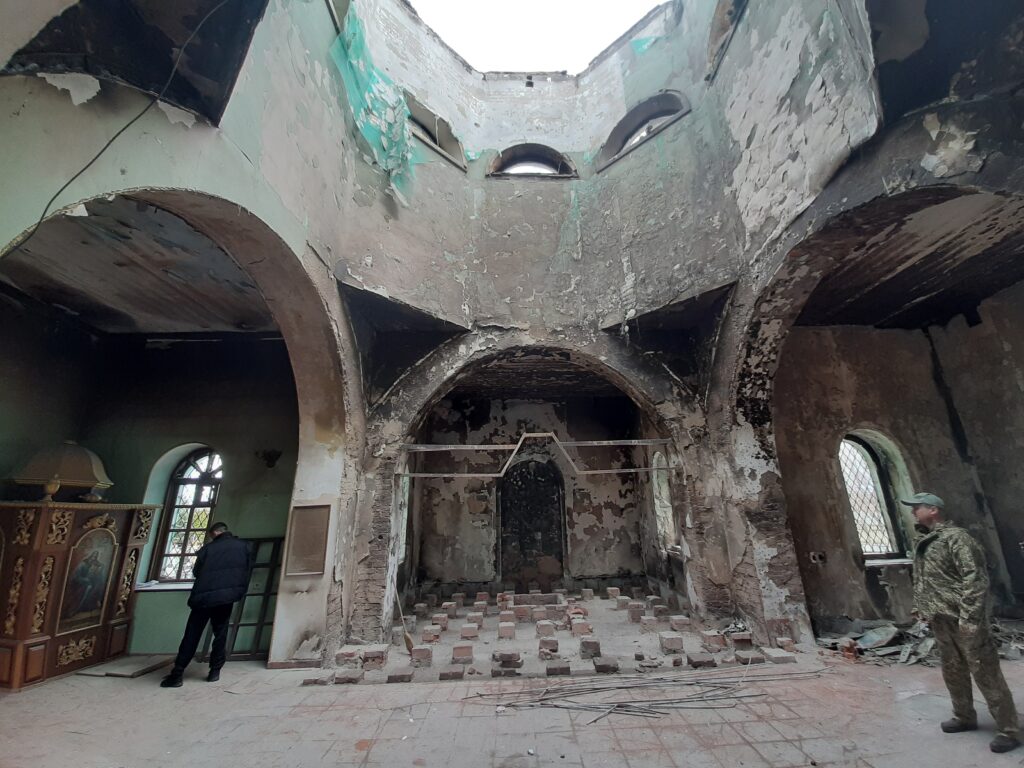
Here we will mention another side. The composition of the newcomers was surprising: there were few Slavic faces. If there was no officer around, they looked like an uncontrollable mass. The ‘liberators’ also claimed that they had come to save us from NATO. That caused misunderstanding among the locals so they wished to tell the occupiers all they thought of them. The response was sometimes inadequate. In the village of Syvolozh, the Plyskiv community, ruscists shot a man in the legs for talking – he died from blood loss. And they shot two young people in the Bakhmach community. A similar case happened in the Mykhailo-Kotsyubynske community. In Mokhnatyn, the Novyi Bilous community, the occupiers’ IFV shot dead three young men. Later, we learned about a concentration camp in Yahidne – the ruscists were so afraid of the local people that they locked them in the school basement and kept them there for several weeks. In the nearby Ivanivka, the horde was more adequate – they just killed a few locals. As one of the ruscists put it: “You see, it’s like this: either you kill me, or I kill you. So I’d rather kill you.” Those were the so-called ‘green men’. There were also the ‘black’ – the Russian Guard – ideological tools of enslavement and murder. They are associated with abductions of people, including the Snovsk community head, village heads, businessmen… There were similar cases in the Novhorod-Siverskyi and Nova Basan communities.
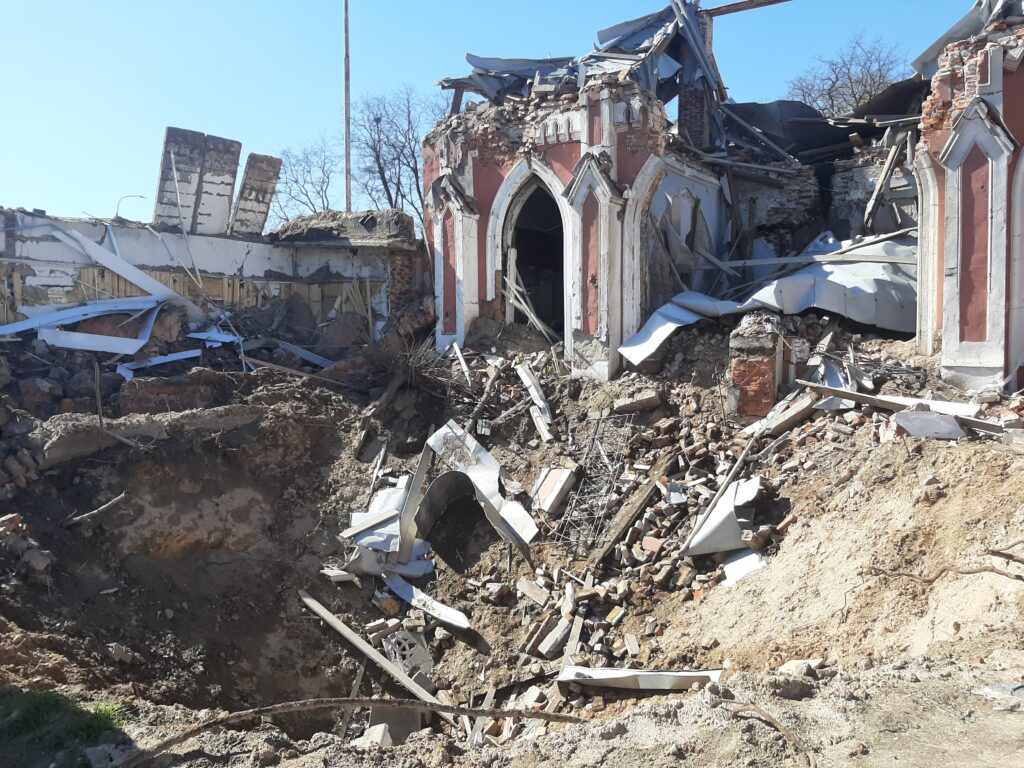
Any manifestation of disloyalty to the occupiers could turn into a tragedy. They felt masters of the situation. The question is what community heads, staffers, and deputies were supposed to do under such circumstances. Did they have to maintain contact with the occupiers? And if they came themselves – hide or meet? Where is the line beyond which is treason? Is resistance possible under such circumstances?
As for resistance, road blocking was probably its most striking manifestation. Or pickets. The episode in Bakhmach, when a local man threw his bicycle under the Russian armored vehicles, became famous. Or the mass road blocking in the Koryukivka and Snovsk communities, road blocking in Nova Basan. In Zaimyshche (near Snovsk), it ended with setting fire to one of the ruscists’ vehicles, the explosion of ammunition and their shelling. By the way, it was not recommended for the ruscists to leave their equipment unattended, because it caught fire for some reason. Or the abandoned equipment was repaired by communities and ended up in the service of the AFU.
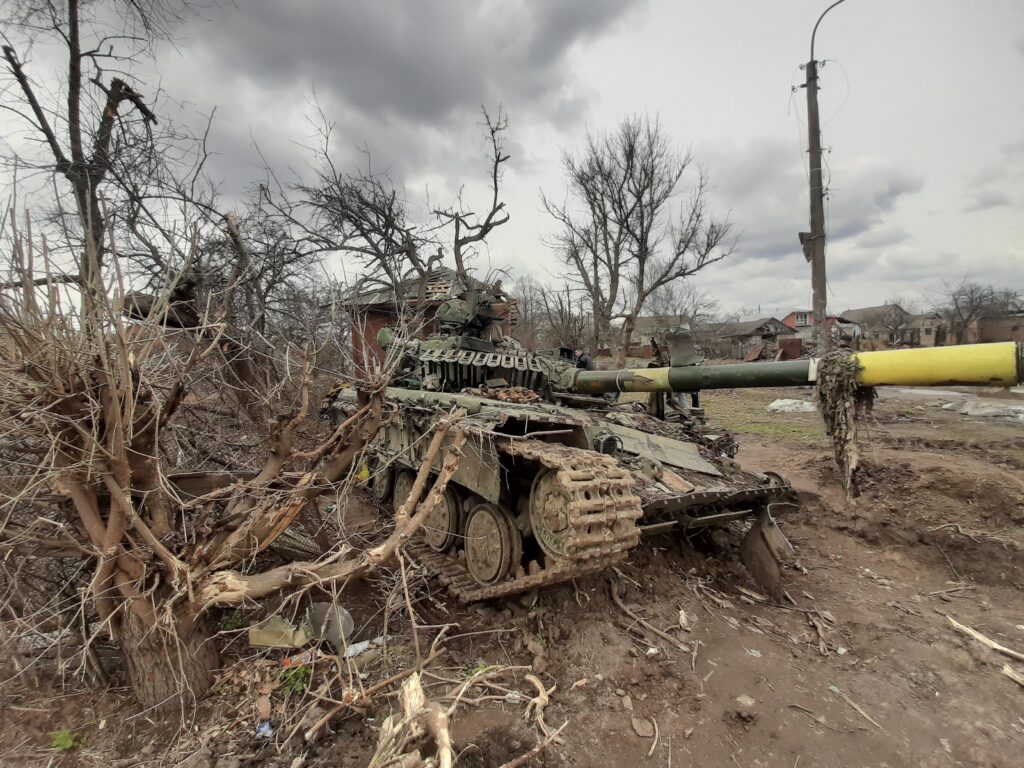
As a result, enemy movement slowed down, their units roamed along local roads. It took the occupiers about three weeks to reach the village of Zamhlai, the Ripky community. In the end, they abducted and tortured the headman. Unfortunately, the fate of the headman from Novi Borovychi, the Snovsk community is still unknown – he persuaded people not to receive the so-called “humanitarian aid” from ruscists.
The most common form of resistance was the destruction of road signs. The goal was the same – to force the invaders to circle the little-known local roads. Residents of the Semenivka and Novhorod-Siverska communities approached the issue creatively – they wrote everything they think about muscovites and pointed them in the relevant direction.
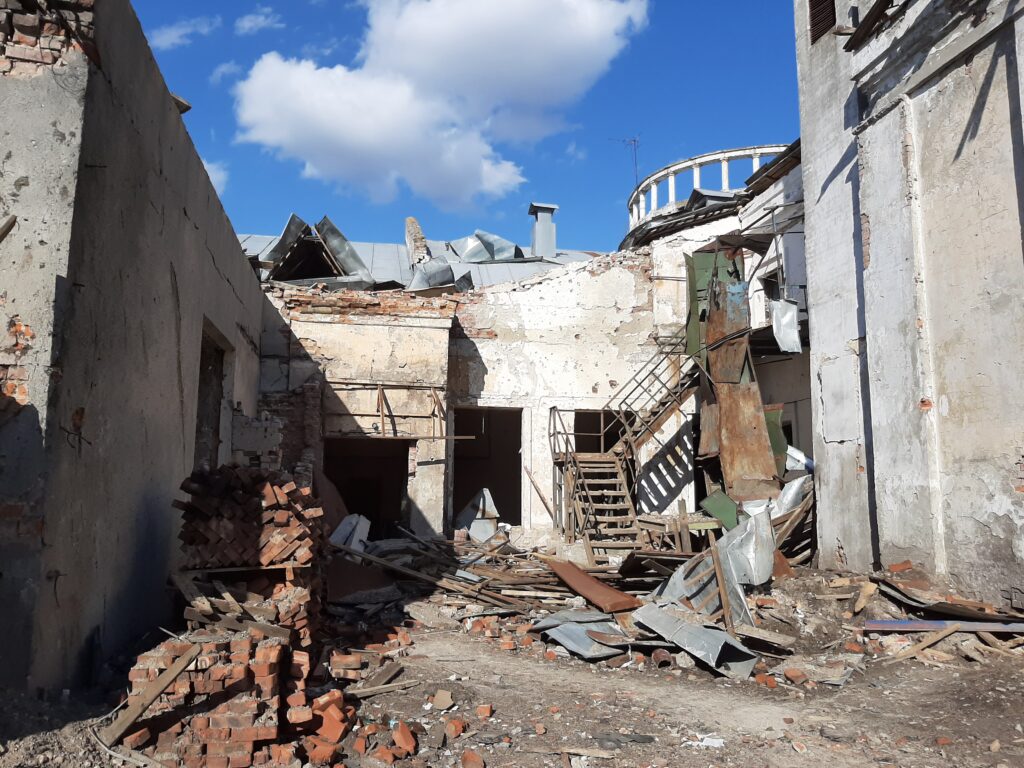
The speech of the head of Koryukivka in social networks also became known – an open text with explanations to people what to do. There are also records of other heads of communities on social media. They addressed their countrymen and demonstrated the presence of the Ukrainian authorities even in the occupied territories. Their content was the same – aggression was called aggression, enemies were called enemies.
On March 9, the mayor of Horodnya held a patriotic rally on Taras Shevchenko’s birthday – under Ukrainian flags and machine gun barrels. At the beginning of March, residents of the Dobryanka community (on the border with Belarus) came to a rally. A similar rally was also held in the neighboring Ripky community. At the end of March, probably, the biggest meeting was held in Slavutych. “Our time has come” – this is how the appeal of the city council began. The result was a 5,000-strong pro-Ukrainian rally and a temporary withdrawal of Russian units from the city.
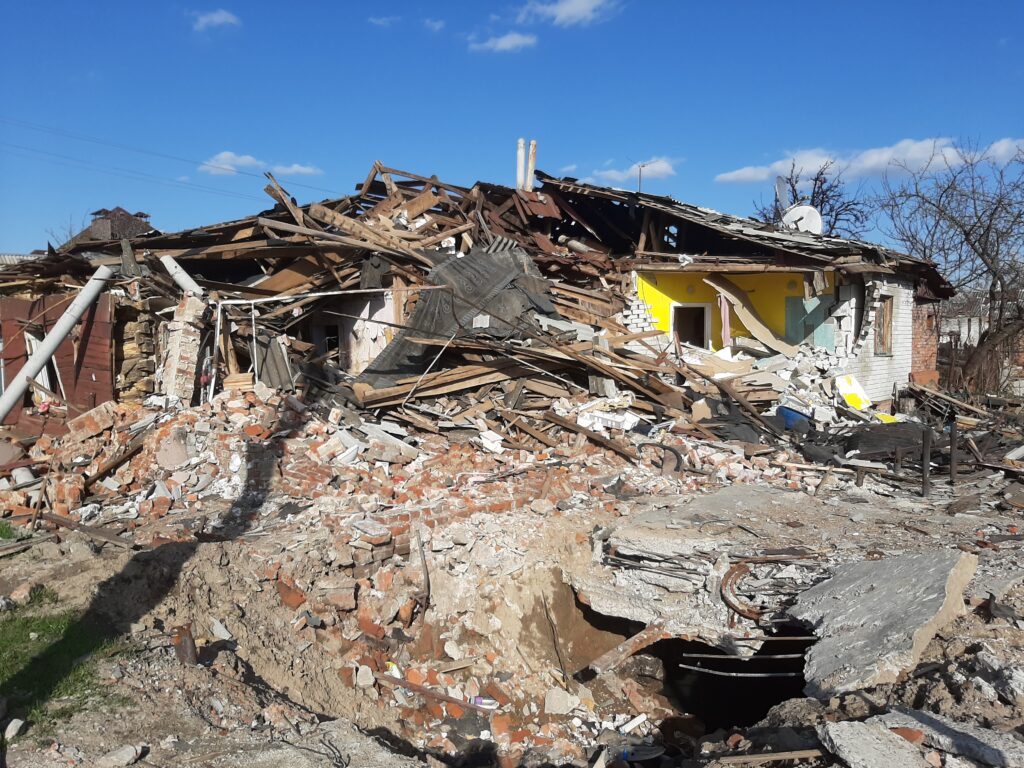
However, most messages were devoted to social and economic issues. Cash flows to the budgets stopped, electronic networks did not work… In terms of data transmission and management, communities reverted back to the Middle Ages. But their main function remained – ensuring the management of the territory and meeting the needs of residents.
All enterprises, except for the food ones, stopped; their employees were left without salaries. Due to the damage to the transport infrastructure, the logistics supply chains disappeared almost instantly – along with the national market. Each community lived under slightly different conditions, with its own set of goods and configuration of prices. For example, in the administrative center of one community, a bag of sugar costs 1,000 hryvnias, and 30 km away – 1,500. Pricing, to a large extent, turned into a nightmare due to hyped demand.
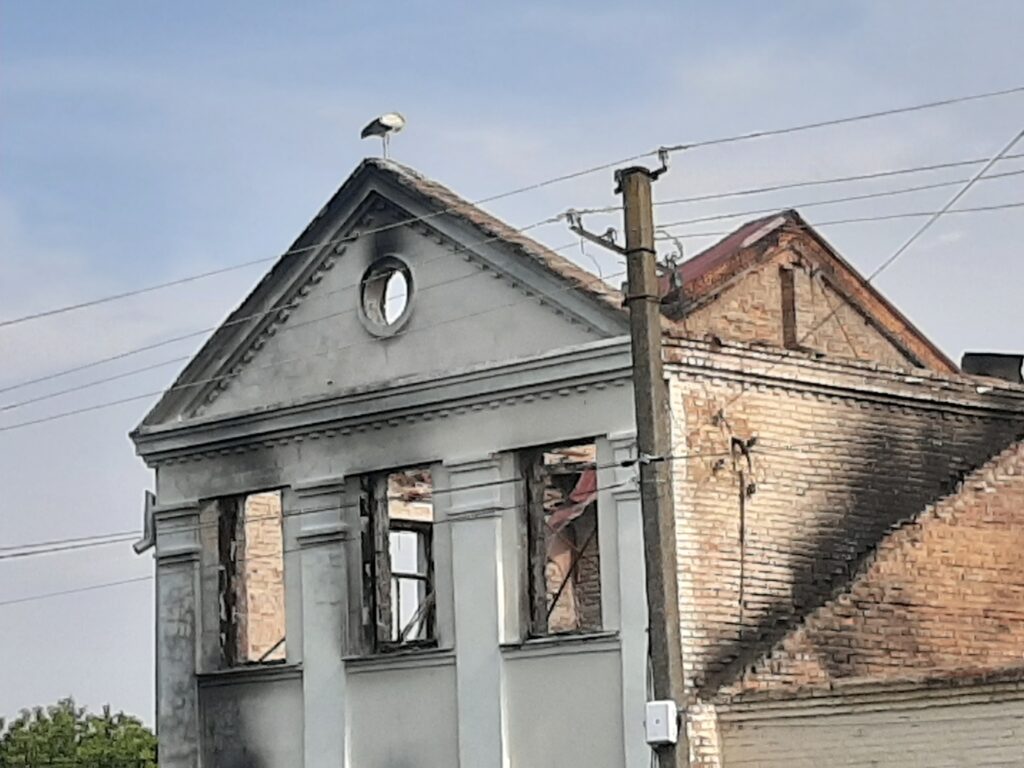
Long queues for food products were characteristic signs of that period. Chain stores mostly were closed or worked part time (there was nothing to sell), only small shops and stalls worked. The self-government officials helped with the delivery of goods in ways known only to them, in order to at least somehow meet the demand. The main supplier of products became the local communal market, and the local self-government bodies were responsible for ensuring its daily operation.
One of the most urgent problems of self-government was baking bread. There was a shortage of flour and yeast everywhere. Communities with their own bakeries were in an advantageous position. Their work became a real quest – how to grind grain into flour, to find yeast, to repair equipment, and most importantly – to find people willing to bake bread almost on a volunteer basis.
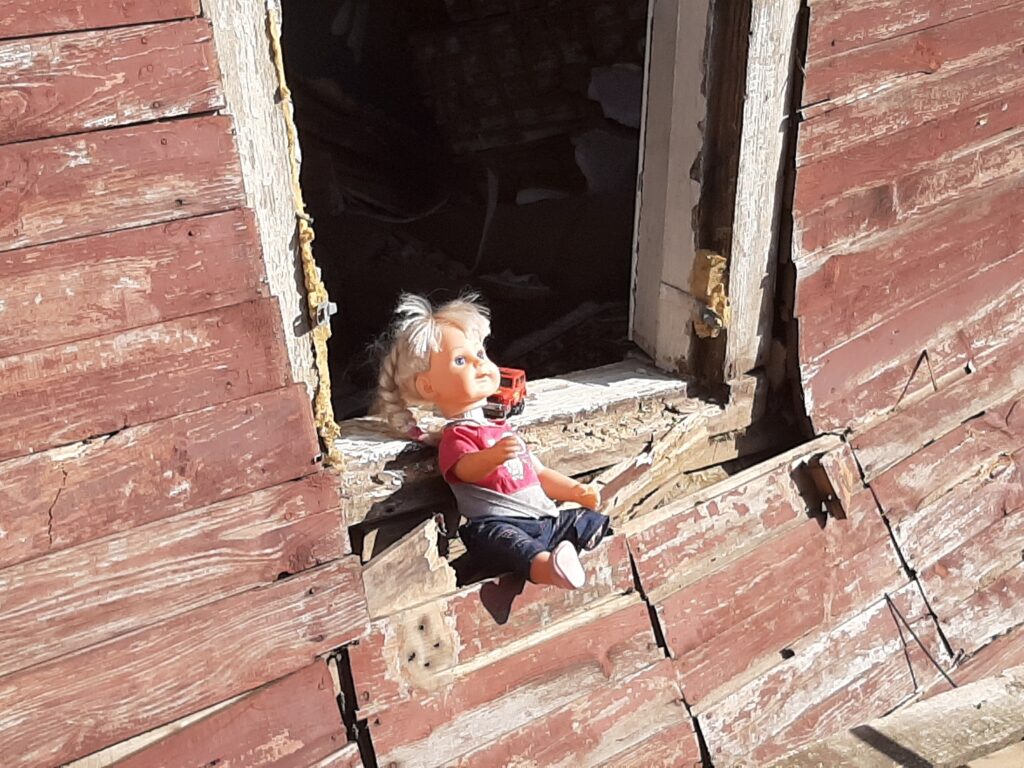
But milk was often distributed for free – it turned out that large producers simply had nowhere to sell it. Local councils tried to regulate this area, providing (together with entrepreneurs) free distribution of milk to those who needed it and thus demonstrating the presence of the Ukrainian authorities there.
The number of residents of communities has increased significantly due to IDPs, mainly from the city of Chernihiv. At the same time, some communities (for example, Berezna and Kulykivka) systematically helped the residents of Chernihiv to leave the city under fire. Reception and accommodation of IDPs in the occupied territories, as well as care for socially vulnerable people and people with special needs became the sole responsibility of local self-government bodies.
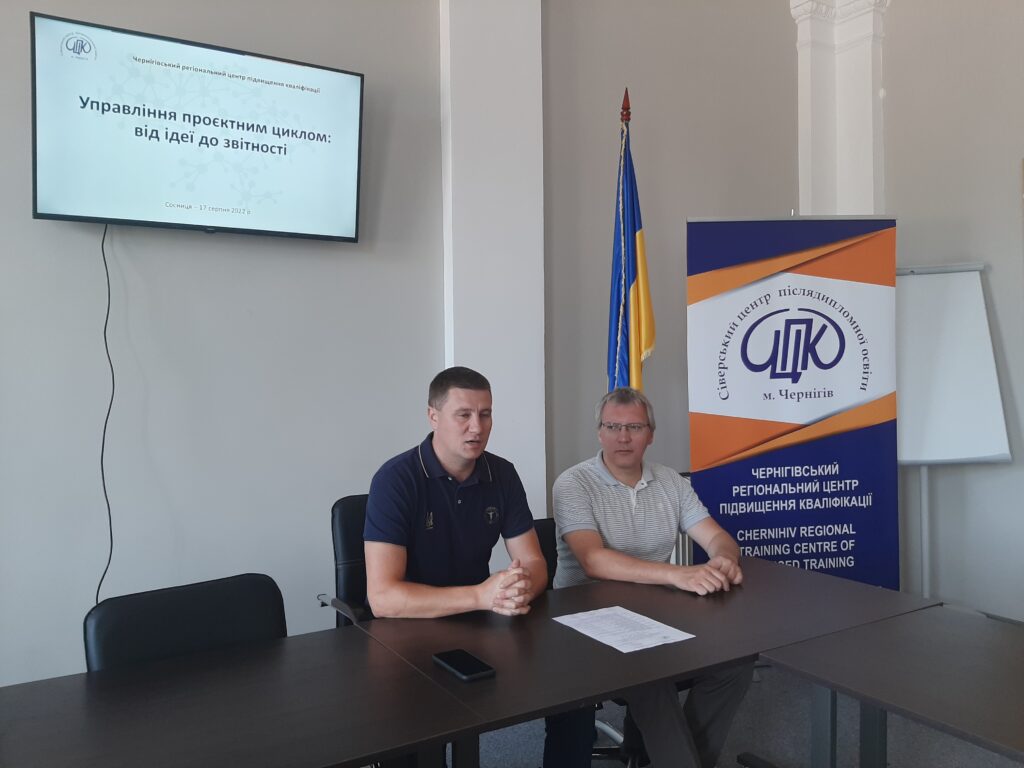
The growing problem was fuel. Local councils regulated its sale (primarily for special 112 transport). A private person could only buy 10 liters at a time. By the way, this is one of the reasons for the localization of markets.
Self-government was able to ensure the provision of utility services even during military operations – wherever the networks were not damaged. In passive occupation, electricity disappeared for a relatively short time – from several hours to several days. There was gas and water supply. In Chernihiv, ruscist shelling led to a humanitarian disaster – the city was without electricity and, correspondingly, without water for almost a month. However, thanks to the communal workers, the besieged city remained surprisingly clean and orderly.
However, self-government could not influence the availability of cash: external replenishment almost disappeared; it was not possible to pay by card. It was only somehow possible to top up ATMs with the cash proceeds from stores, so ATMs dispensed very limited sums (say, UAH 500). In the fourth week of the occupation the prospect of in-kind exchange appeared on the horizon, but it did not come to ersatz money.
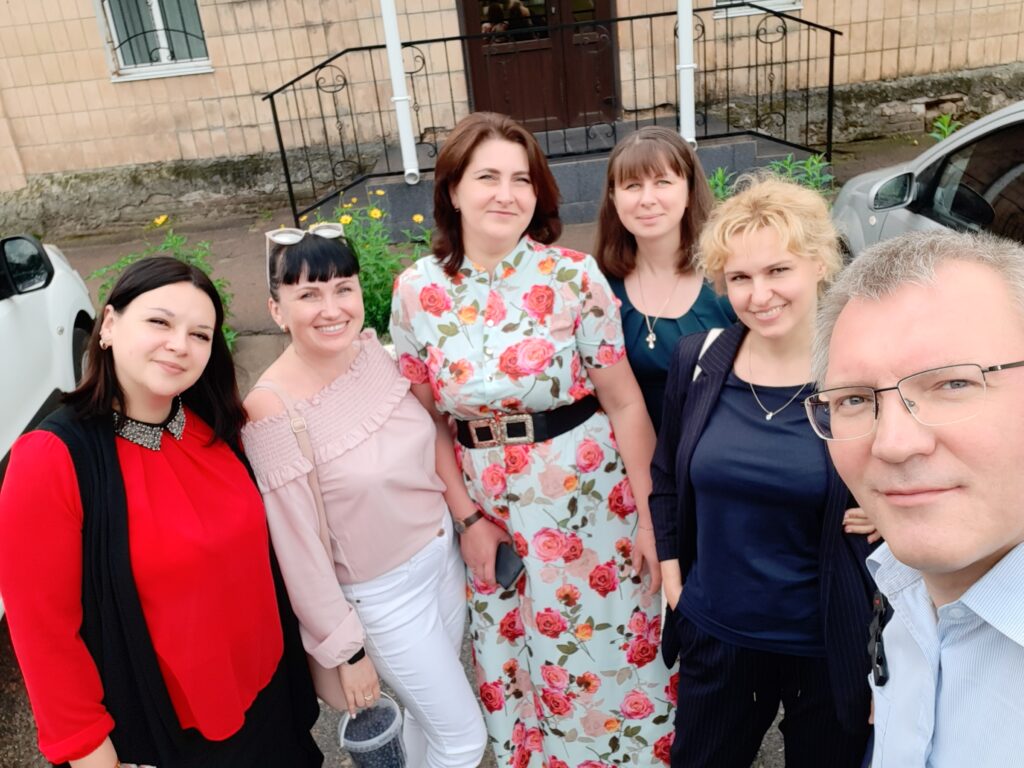
Exceptional conditions forced community leaders to act mostly alone. The number of full-time employees of the executive committees of the councils decreased to a critical minimum. Convening council sessions became a unique phenomenon. For example, in Pryluky, the council approved the budget, which it could not do for more than a year. We are not aware of any cases of power abuse.
In the Chernihiv region, local self-government as an institution significantly strengthened organized resistance to the occupiers. Its authority was reinforced by its daily work on the organization of community life. Local governments demonstrated a phenomenal ability to work autonomously. In general, under extreme conditions, they were able to provide the minimum necessary conditions for the residents of the communities, responded in time to the problems that arose. Currently, Ukrainian local democracy is undergoing a severe test of viability. And it stays with dignity.
Volodymyr Boyko, Chernihiv
5.09.2022



